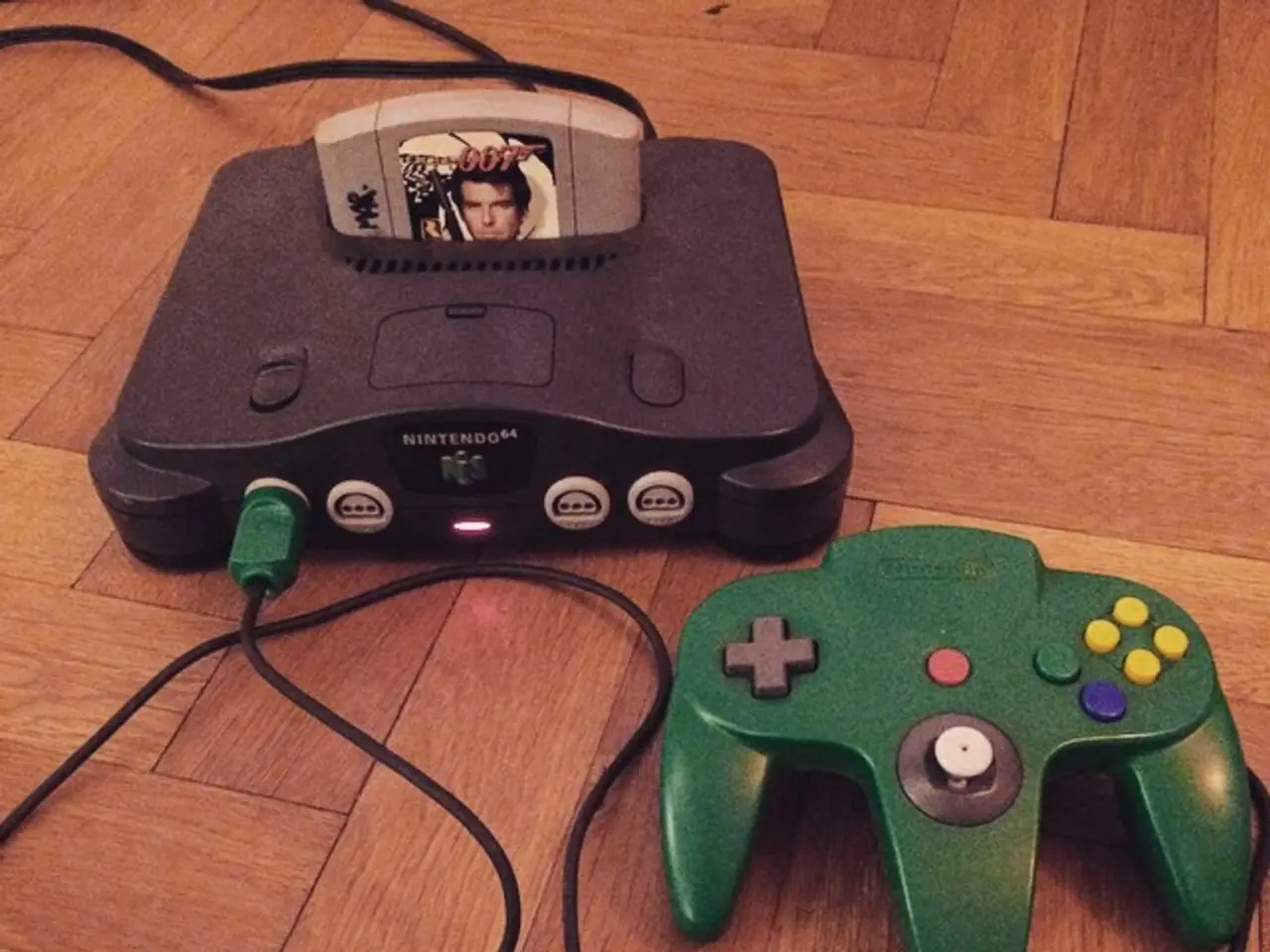Game's Evolution Through the Ages: Pong Chronicle
The Dawn of Video Games: A Journey Through History
The birth of video games can be traced back to the 1940s, with the invention of the first interactive electronic game. In 1947, Thomas T. Goldsmith Jr. and Estle Ray Mann created an oscilloscopic game that simulated an artillery shell trajectory on a CRT screen, making them pioneers in the field [1][3].
Fast forward to the 1960s, and Ralph H. Baer began developing a system to play a simple table tennis game on a television screen, which he named the "Brown Box." This prototype, created in 1966, would later become the basis for the Magnavox Odyssey, the first home video game console commercially released in 1972 [2][3].
Meanwhile, in 1970, Nolan Bushnell and Ted Dabney created the game Computer Space, but it proved to be a commercial flop. However, it was Bushnell's request to create a tennis game as a warm-up project that led to the creation of the prototype Pong game by Allan Alcorn in 1972 [4]. Interestingly, this prototype Pong game was first showcased in a local bar, about three months after the Odyssey was released [5].
The Odyssey game, produced by Magnavox in 1972, was based on the "brown box" prototype. In its first year, it sold 69,000 units, and by 1975, the number had grown to 350,000 units [6]. The simplicity and popularity of the game paved the way for the modern video game industry.
However, it was the Pong game, produced by Atari a few months later, that truly captured the public's imagination. The coin acceptor of the Pong game filled up in only a few days, indicating its popularity [5]. Magnavox sued Atari over the Pong game, leading to a deal where Atari became a licensee of Magnavox for $1.5 million and other concessions [7].
The AY-3-8500 chip, created by General Instruments, was a single-chip Pong game that could also play soccer, squash, and rifle games with additional components. These chips were popular and were used in over 200 products during the era, including the Odyssey 2000 and 3000, Radio Shack's TV Scoreboard, and Sears' Hockey Pong [8].
In the UK, Douglas, a man at the University of Cambridge, played noughts and crosses on EDSAC's CRT display in 1952, marking an early foray into video game history [9]. Willy Higginbotham, at Brookhaven National Laboratory, also created a tennis game using an analog computer and an oscilloscope in 1958 [10].
The journey of video games from these early beginnings to the complex, immersive experiences we have today is a testament to the creativity and innovation of the individuals who dared to dream and create in this exciting new medium.
References: [1] Goldsmith Jr., T. T., & Mann, E. R. (1947). Cathode-ray tube amusement device. US Patent 2,455,992. [2] Baer, R. H. (1966). Television games and systems. US Patent 3,497,747. [3] Fullerton, J., Swain, S., & Hoffman, J. (2008). Game design theory and practice. CRC Press. [4] Bushnell, N. (2005). Finding the enemy: How Pong was created. Gamasutra. [5] The History of Pong. (2018, October 16). Retrieved from https://www.britannica.com/topic/Pong-video-game [6] Magnavox Odyssey. (2021, February 10). Retrieved from https://en.wikipedia.org/wiki/Magnavox_Odyssey [7] Atari, Inc. v. North American Philips Consumer Electronics Corp. (1976). Retrieved from https://www.courtlistener.com/opinion/1070737/atari-inc-v-north-american-philips-consumer-electronics-corp/ [8] AY-3-8500. (2021, February 10). Retrieved from https://en.wikipedia.org/wiki/AY-3-8500 [9] Douglas C. (1952). A game of noughts and crosses. Nature, 169(4311), 531. [10] Higginbotham, W. (1958). Tennis for two. Brookhaven National Laboratory. Retrieved from https://www.brookhavenlab.edu/newsroom/tennis-for-two-50th-anniversary
- The technology advancement during the 1960s also saw the development of hardware such as the "Brown Box" by Ralph H. Baer, a precursor to the first home video game console, the Magnavox Odyssey.
- Electronics and gadgets like the AY-3-8500 chip, created by General Instruments, played a crucial role in the expanding video game industry of the 1970s, finding applications in various products, including the Odyssey series and other popular video game devices.




